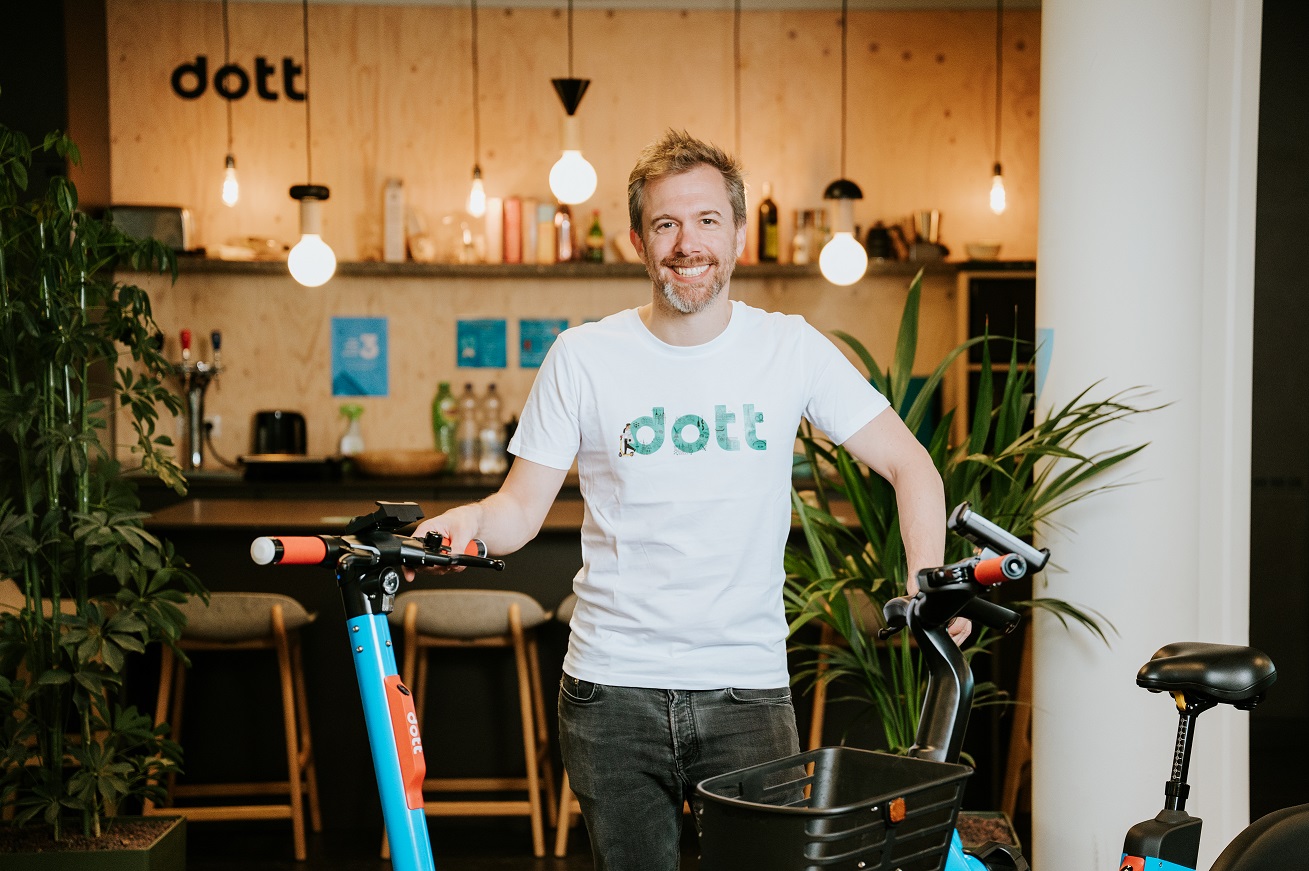
Photo: Dott
How e-scooters fit into the mobility mix
22 June 2023
Maxim Romain, Co-founder & COO, Dott, explains how e-scooters fit into the mobility ecosystem and where the industry is going.
How has the mobility ecosystem changed over the past decade?
Traditionally, personal cars have been the default for transportation. We can see this in the design of our cities, with large amounts of space in city centres dedicated to car parks, and many of our streets lined with car parking spaces. This was complemented by public transport, which was typically provided by the public sector.
What we have seen over the past decade is a shift on two fronts. Firstly, from the cities themselves, which are focusing on reducing pollution, removing cars from city centres, and promoting more sustainable ways to travel. This has led to a rise in the number of cycle lanes, the creation of car-free zones, and policies such as lowered speed limits for cars, to make car travel less appealing and cities safer for micromobility users.
Secondly, with the development of new technologies, new ways to travel are being introduced, funded by the private sector. Whether it’s ride-hailing, shared micromobility, or integrated MaaS platforms, these new forms are focused on providing the convenience and ease of private car ownership, with the affordability, accessibility and reliability of public transport. The result has been that pollution is falling in many major cities globally and residents have greater choice of how they travel, being able to pick the mode that is right for them at any given time.
Is a multimodal future inevitable?
It’s clear that people need different forms of transport depending on their specific needs at any point. Multimodal travel means that people can pick the mode that best suits them on any occasion, blending modes to get from specific start and end points in the most efficient and effortless way.
Infrastructure needs to support this ambition, with shared micromobility parking spots close to public transport, for example. Over time, this process will become even more seamless, and people will be able to plan, book and pay for their transport choice through one place, combining transport modes.
How do you see e-scooters fitting into this ecosystem?
Shared e-scooters offer a pollution and noise-free solution for trips in city centres. Trips are often combined with public transport, providing the first and last mile part of longer journeys, and as our service matures, we now see that the majority of our trips are during commuter times. This shows that people are relying on them for their daily transport needs.
In order to provide a compelling alternative to car travel, a range of options must be available to suit different needs. While an e-scooter is unlikely to be an appropriate choice for someone who has bags of shopping with them, it will suit those looking to get across a city centre efficiently and enjoyably.
Funding remains a challenge for implementing new technologies. Are public/private partnerships key to unlocking this?
We continue to work with a range of long-term shareholders, who are supportive of our vision to provide clean rides for everyone. As the economic environment has changed, we have accelerated our plans towards profitability.
Shared micromobility usually comes at no cost to the cities it serves. As such, its profitability and viability highly depends on good fleet usage and favourable local regulation. But to expand services to areas which have lower densities, targeted micro-subsidies can allow operators to viably establish micromobility services in these lower demand areas. Using the right data, a real understanding of which areas would benefit from targeted support is possible.
This is firstly more economical for city authorities, and also creates a balance between public objectives and commercial sustainability.
What is next for Dott?
Most recently, we have just launched our service in Madrid, following a competitive tender in the city. With 2,000 e-scooters there, we are focused on making that city a success, and are trialling new pricing, designed for everyday use and mirroring metro tickets. Rides will cost just €1.50 per trip, when using a €4.99 monthly pass, making it easier for users to know how much they will be charged before their trip, removing any unexpected surprises from pay-per-minute fees. And by charging per trip rather than per minute, riders are encouraged to travel safely, instead of rushing their journey to save costs. We look forward to seeing the feedback on this model, and will explore rolling it out to other markets if it is successful.
Elsewhere, of course the recent decision to remove shared e-scooters from Paris means we will need to adapt our service there. We will continue to operate e-scooters throughout the summer, and will be increasing our e-bike fleet so that the many users who rely on our service for their daily travel will have an alternative once the change comes into effect in the autumn.
We are also continuing to explore new opportunities, and to grow our service as more cities look to introduce sustainable and responsible shared micromobility schemes.





